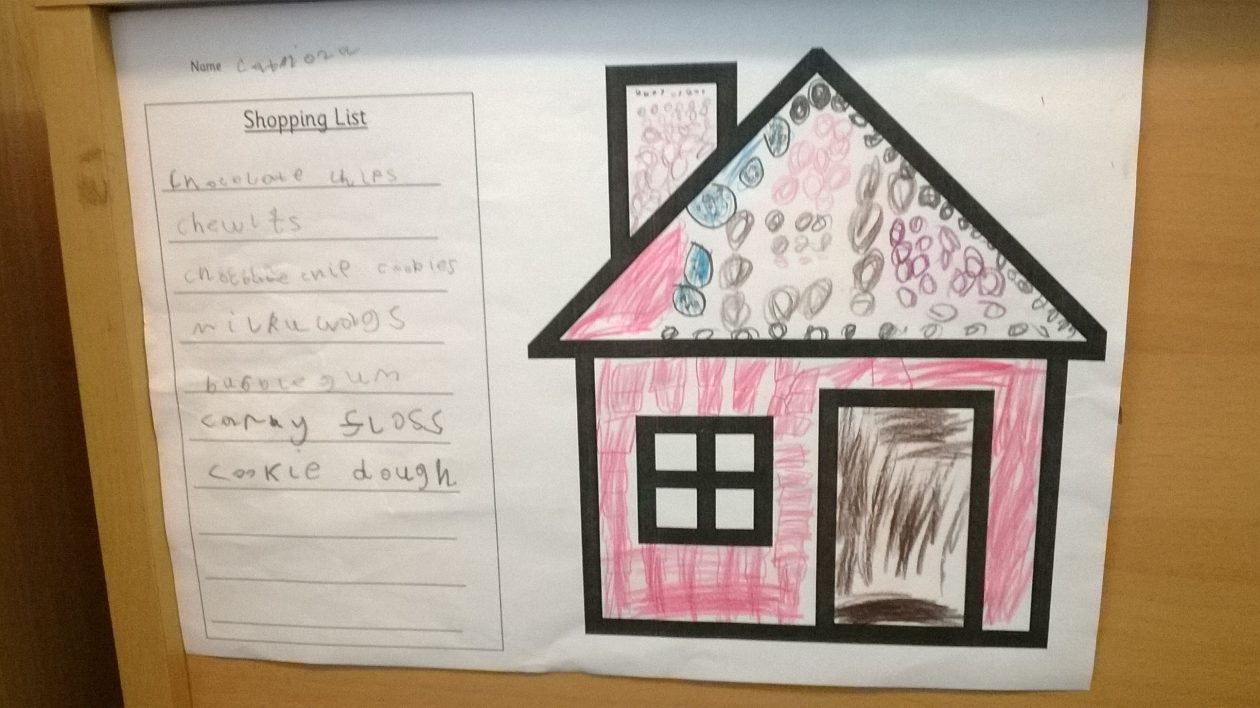
 Rebecca Spalding and Rachel Keane are using the Storyline approach to develop their pupils’ language and literacy skills. They are class teachers at Moray Primary school – Rebecca has a primary 1 class, and Rachel teaches primary 2 pupils. They chose a Fairy tale context to target specific language skills and have been supporting each other in planning the structure of their storyline episodes since February. Both teachers feel the approach has had a very positive impact on their pupils’ literacy and personal skills.
Rebecca Spalding and Rachel Keane are using the Storyline approach to develop their pupils’ language and literacy skills. They are class teachers at Moray Primary school – Rebecca has a primary 1 class, and Rachel teaches primary 2 pupils. They chose a Fairy tale context to target specific language skills and have been supporting each other in planning the structure of their storyline episodes since February. Both teachers feel the approach has had a very positive impact on their pupils’ literacy and personal skills.
The photos throughout this post evidence pupil development of sequencing skills within language tasks, creating a variety of texts, and the development of independent writing. 
Rebecca feels that her pupils are better able to write sentences, and can interpret visual texts and re-tell stories with much more confidence and flair. Her class get so excited each time a letter or a message or book is left by the “dragon” (their main storyline character). The dragon leaves a trail of glitter to let the children know he has been, and they’ve decided that he sneaks in through their classroom window when they are not in school. The children are thrilled when each message appears and relish the tasks they need to do for the dragon. This approach motivates and engages the children and they can’t wait to post their messages into the dragon mailbox.

Rachel’s class have a knight as their main character and their classroom includes a wonderful castle frieze and life-size drawbridge where the children can play. Both classrooms are very stimulating learning environments because they have evolved and been led by the pupils’ response to the clues and messages received. The messages from the knight enable the children to take a problem-solving approach to each task he sets. Pupils are developing their creativity skills and a positive mindset towards their literacy. The photos show how relevant each literacy experience has been for the children, and where Rachel and Rebecca have taken advantage of natural links across learning. (Growing a bean when studying Jack and the Beanstalk, applying measuring skills and completing a technology/expressive arts rich homework task).


Rachel feels her pupils are much more engaged in their work. They are more confident about their literacy skills and are more willing to share their ideas and suggestions. They can sequence a story better and are more independent when writing.

One of the most noticeable changes for Rachel and Rebecca has been the increase in pupils choosing to read. Pupils are reading for enjoyment and picking up books much more often than before. Both teachers feel they have been able to build personalisation and choice into their storyline by following the prior knowledge their pupils have of traditional tales. Using these stories as a focus fits well with the discrete active literacy work being done in class, and offers opportunities for pupils to broaden, challenge and apply their literacy skills. Both classes are perfecting their classrooms and preparing for their big storyline celebration in the last week of term. The pupils are looking forward to sharing their learning with the guests they have invited along.






